Pir AS 312 with 2 rechargeable AAA battery. Boost needed?
-
Hi guys, problem solved :wink:
The high current issue was caused by the damn flyback diode (D7).
Now the boost converter works as expected and without triggering false positive issue on the PIR (AS312).
No problem also with the radio module (RFM69@868 Mhz). Not yet tested the board with a NRF24L01 radio module (THT or SMD) but I have both modules, so it is just a matter of time.After some testing I have decided to remove Q3, Q4 and Q5 because the boost converter (ME2188C33) when not enabled through the CE PIN (driven by D4 of the ATMega) act as sort of "bypass" for VCC.
With 2xAAA rechargeable batteries at 2.4V I have had some stability problem with the MCU (reset), but I have solved setting the frequency and the fuses to work at 1 Mhz (with MYSBootloader). Is it normal that an ATMega328 at 8 Mhz is unstable at 2.4V?
The last thing that I have to change is the circuit of the blu led (D3)... The typical voltage drop of this led is 3.0V, so with 2xAAA batteries and 2.4V the brightness is to low, so the idea is to power it with the 3.3V out of the boost converter, controlling the brightness through an N-Mosfet, driven by PIN D5 of the AtMega.
The firmware is under testing and is available here
Below the updated schematics.

@franz-unix said in Pir AS 312 with 2 rechargeable AAA battery. Boost needed?:
Is it normal that an ATMega328 at 8 Mhz is unstable at 2.4V?
Yes it is. Minimum voltage is 2.7V at 10MHz and 1.8V at 4MHz so at 8MHz the minimum voltage is 2.4V.
-
@franz-unix said in Pir AS 312 with 2 rechargeable AAA battery. Boost needed?:
After some testing I have decided to remove Q3, Q4 and Q5 because the boost converter (ME2188C33) when not enabled through the CE PIN (driven by D4 of the ATMega) act as sort of "bypass" for VCC.
I have the same "problem" with ME2188, although it seems to be more of an advantage for you. I have no mention of this in the datasheet I have, do you have a datasheet stating this ?
-
@franz-unix said in Pir AS 312 with 2 rechargeable AAA battery. Boost needed?:
After some testing I have decided to remove Q3, Q4 and Q5 because the boost converter (ME2188C33) when not enabled through the CE PIN (driven by D4 of the ATMega) act as sort of "bypass" for VCC.
I have the same "problem" with ME2188, although it seems to be more of an advantage for you. I have no mention of this in the datasheet I have, do you have a datasheet stating this ?
@nca78 No the datasheet that I have says nothing about what appens when CE pin is low.
I have discovered this behaviour when testing the board, but it is coherent with the diagram block of the IC reported in this datasheet.
In any case (booster on or off) the current will flow through the inductor, so it is not a real bypass, but the PIR works good in both situation and I have not observed any strange current or voltage spike.
Do you need to completly disconnect the Vout when the boost converter is disabled? Maybe you can obtain this connecting a p-mosfet and a n-mosfet (like Q3 and Q4), but on the Vout rail and drive the n-mos gate with the same pin that you use to enable the boost converter
-
@nca78 No the datasheet that I have says nothing about what appens when CE pin is low.
I have discovered this behaviour when testing the board, but it is coherent with the diagram block of the IC reported in this datasheet.
In any case (booster on or off) the current will flow through the inductor, so it is not a real bypass, but the PIR works good in both situation and I have not observed any strange current or voltage spike.
Do you need to completly disconnect the Vout when the boost converter is disabled? Maybe you can obtain this connecting a p-mosfet and a n-mosfet (like Q3 and Q4), but on the Vout rail and drive the n-mos gate with the same pin that you use to enable the boost converter
@franz-unix said in Pir AS 312 with 2 rechargeable AAA battery. Boost needed?:
I have discovered this behaviour when testing the board, but it is coherent with the diagram block of the IC reported in this datasheet.
Yes I should have a better look at those. Even the typical application circuit on first page was obvious with wiring of CE from VOUT :)

Do you need to completly disconnect the Vout when the boost converter is disabled? Maybe you can obtain this connecting a p-mosfet and a n-mosfet (like Q3 and Q4), but on the Vout rail and drive the n-mos gate with the same pin that you use to enable the boost converter
Yes I need the output to be disconnected, I use a 5V sensor from a li-ion battery and I need that sensor to be off most of the time. I decided to take the lazy solution and use a power switch, triggered with the same pin than the EN pin of ME2188.
-
@franz-unix said in Pir AS 312 with 2 rechargeable AAA battery. Boost needed?:
I have discovered this behaviour when testing the board, but it is coherent with the diagram block of the IC reported in this datasheet.
Yes I should have a better look at those. Even the typical application circuit on first page was obvious with wiring of CE from VOUT :)

Do you need to completly disconnect the Vout when the boost converter is disabled? Maybe you can obtain this connecting a p-mosfet and a n-mosfet (like Q3 and Q4), but on the Vout rail and drive the n-mos gate with the same pin that you use to enable the boost converter
Yes I need the output to be disconnected, I use a 5V sensor from a li-ion battery and I need that sensor to be off most of the time. I decided to take the lazy solution and use a power switch, triggered with the same pin than the EN pin of ME2188.
@nca78 All clear! What's your experience with this ME2188 booster? My feedback is positive: cheap, low power consumption, at least on the basis my measurement (not so accurate), and no noise that interfere with the radio module and the AS312 PIR.
Below the board (v.1.0) with 2xAAA batteries and RFM69 radio module


CR2032 battery and NRF24 radio module (THT)
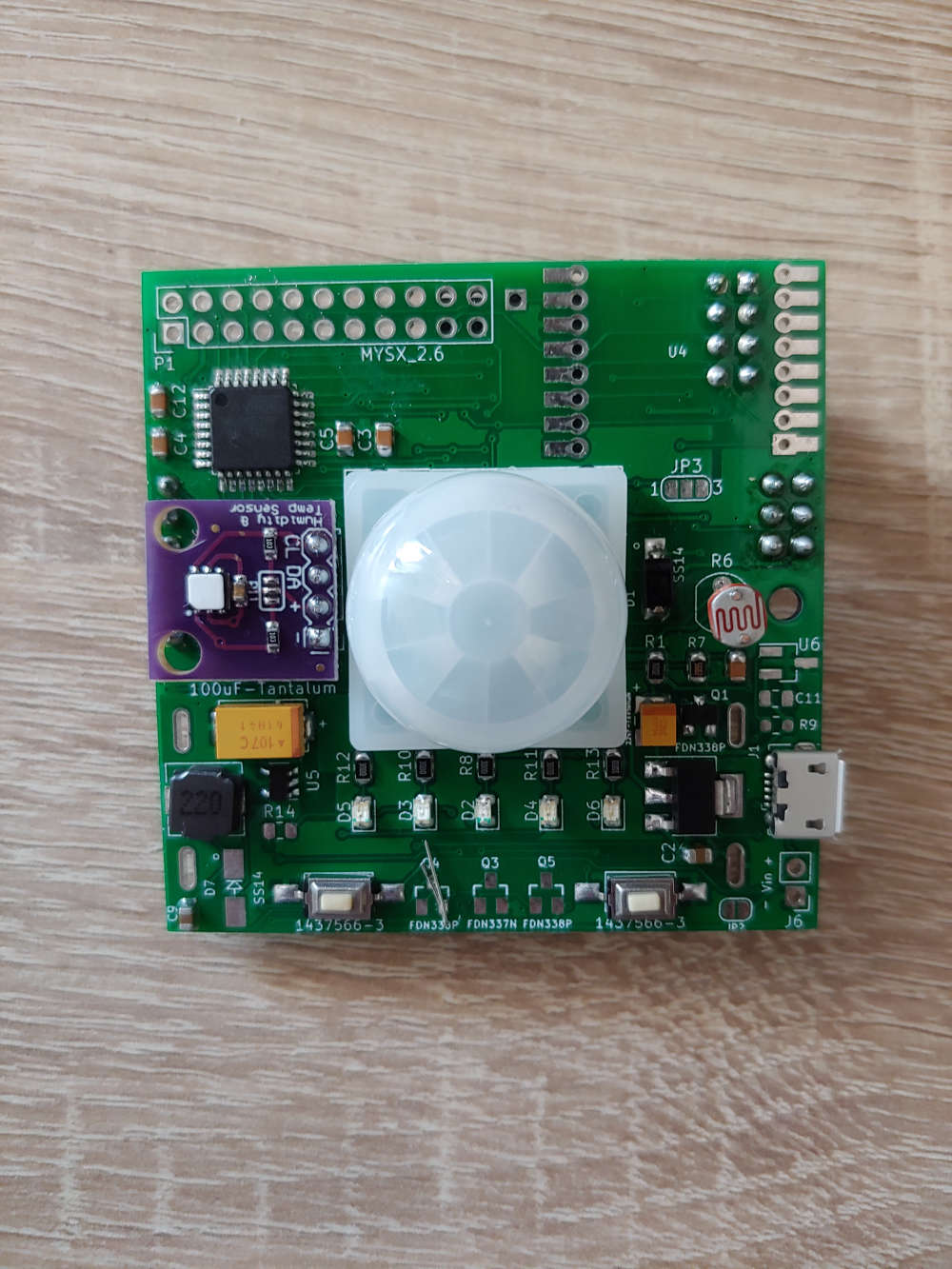
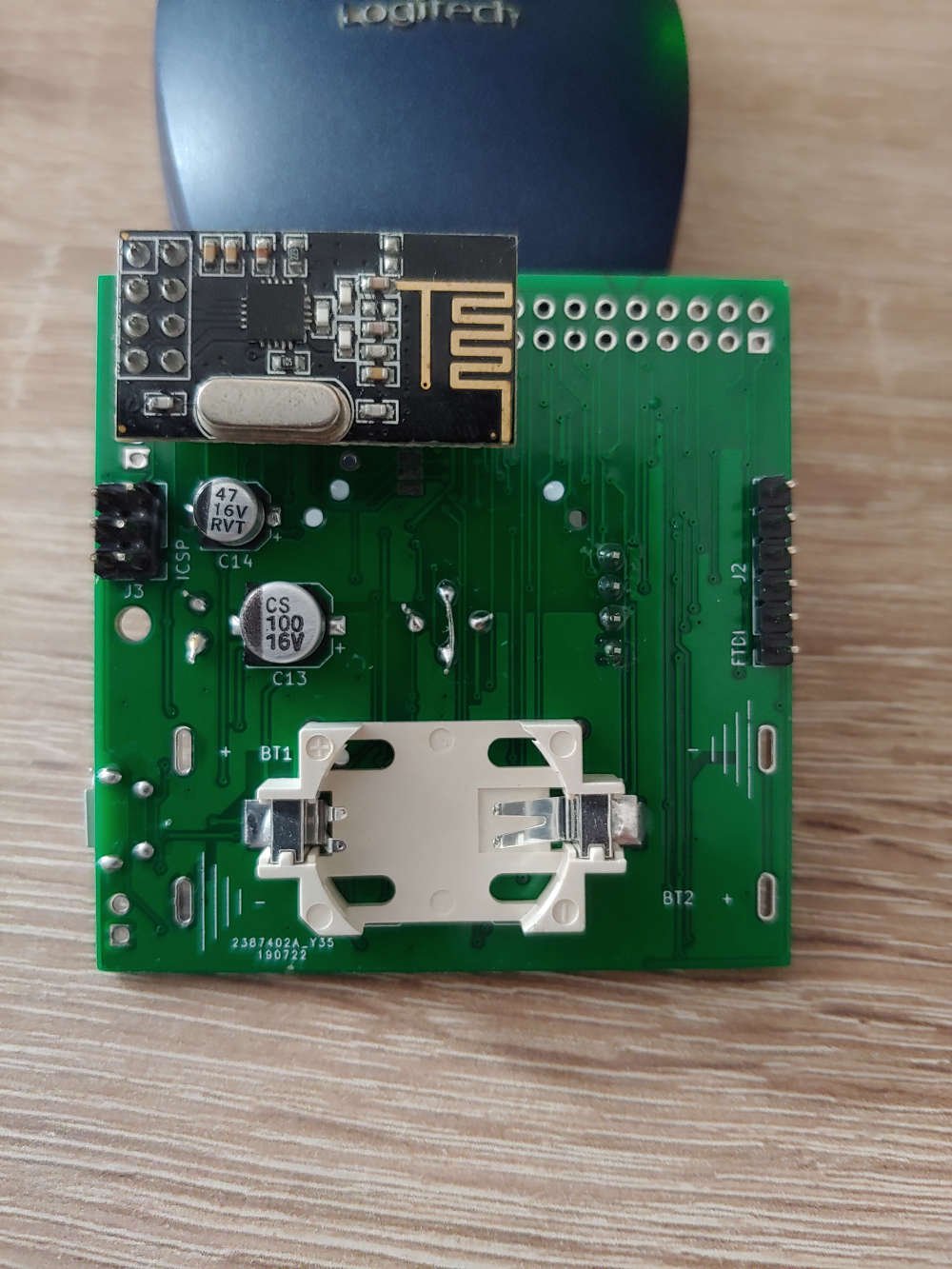
CR2032 battery and NRF24 radio module (SMD)
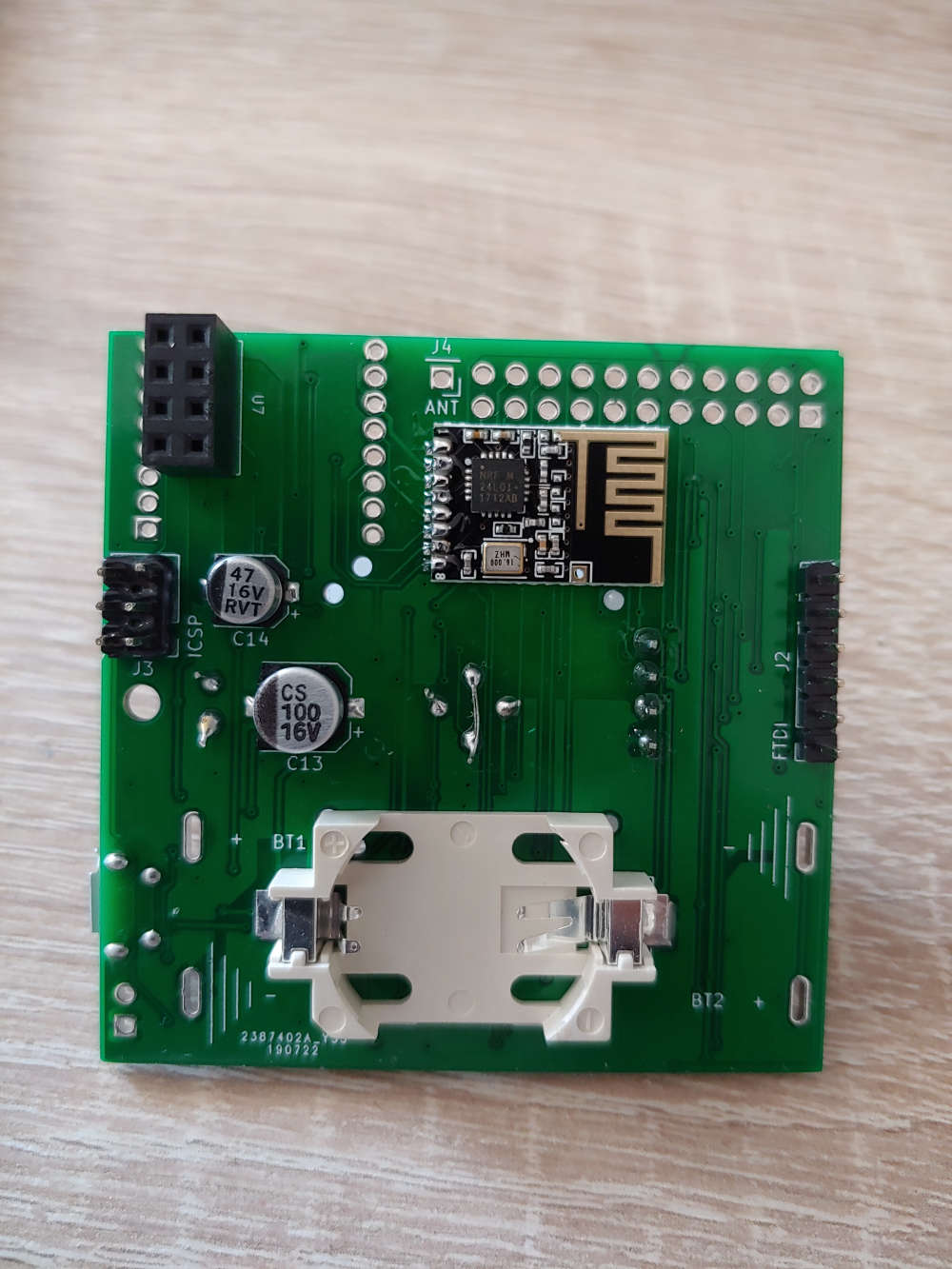
The board v.2.0 is coming. If someone is interested, here all the project files (Kicad)
-
@nca78 All clear! What's your experience with this ME2188 booster? My feedback is positive: cheap, low power consumption, at least on the basis my measurement (not so accurate), and no noise that interfere with the radio module and the AS312 PIR.
Below the board (v.1.0) with 2xAAA batteries and RFM69 radio module


CR2032 battery and NRF24 radio module (THT)


CR2032 battery and NRF24 radio module (SMD)

The board v.2.0 is coming. If someone is interested, here all the project files (Kicad)
@franz-unix said in Pir AS 312 with 2 rechargeable AAA battery. Boost needed?:
My feedback is positive: cheap, low power consumption, at least on the basis my measurement (not so accurate), and no noise that interfere with the radio module and the AS312 PIR.
At least no visible interference with the radio module, but you might get some.
And for RF radiation, interferences and range, no clearance/orientation of the antennas is not good too. -
@franz-unix said in Pir AS 312 with 2 rechargeable AAA battery. Boost needed?:
My feedback is positive: cheap, low power consumption, at least on the basis my measurement (not so accurate), and no noise that interfere with the radio module and the AS312 PIR.
At least no visible interference with the radio module, but you might get some.
And for RF radiation, interferences and range, no clearance/orientation of the antennas is not good too.@scalz with the RFM69 radio module (868 Mhz) I can cover the whole house (about 100 m2), with 3 walls between the gateway and the node, so, for my use case is adequate.
With the NRF24 radio module (THT version) I have the same (poor) range that I can obtain with an Arduino and the same radio module connected with jumper wires, so on the basis of my test the quality of the radio signal is not affected by the boost converter.
I have not yet deeply tested the pcb with the smd version of the NRF24 radio module.
In any case do you have any suggestion for a better orientation/clearance of the antenna? Please note that for the RFM69 radio module you can place the antenna in any direction or side of the PCB that you prefer.
-
@franz-unix
yes, rfm69 modules are great. I prefer them too, and already made custom boards with boosters in the past with these (some with filters or not).But I didn't say your board won't work :)
Just meant:- you would need tools (scope, vna etc) to know about intereferences.
- Same, that's a bad practice to not have any clearance around the antenna.
Like you said, nrf24 has poor range, still you kept a bad orientation ;) You could rotate it 90° so antenna would be outside your board, same for rfm69.
But don't change that for me. I prefer modern mcus, that's a while I've used a 328p mcu!
Like you said if you're happy with results, I'm glad for you too! When it's for personal use, sure, we can take shortcuts, I understand. Craftsman always knows where the little flaws are :)Keep the good work, your board looks nice :+1:
-
@franz-unix
yes, rfm69 modules are great. I prefer them too, and already made custom boards with boosters in the past with these (some with filters or not).But I didn't say your board won't work :)
Just meant:- you would need tools (scope, vna etc) to know about intereferences.
- Same, that's a bad practice to not have any clearance around the antenna.
Like you said, nrf24 has poor range, still you kept a bad orientation ;) You could rotate it 90° so antenna would be outside your board, same for rfm69.
But don't change that for me. I prefer modern mcus, that's a while I've used a 328p mcu!
Like you said if you're happy with results, I'm glad for you too! When it's for personal use, sure, we can take shortcuts, I understand. Craftsman always knows where the little flaws are :)Keep the good work, your board looks nice :+1:
@scalz I know that you are a beast in the board design :grin:
Thank you for sharing your experience! :wink:Newer MCU, like NRF52 will be also my next step, but for the moment I feel more comfortable with the well known and easy to use ATMega328P.
I agree with you, the range and the reliability of the RFM69 is by far better than NRF24.
-
And... the 3d printed case for the board V.1.0
Some adjustment in the tolerances and print settings are required, but the final results may not change so much.
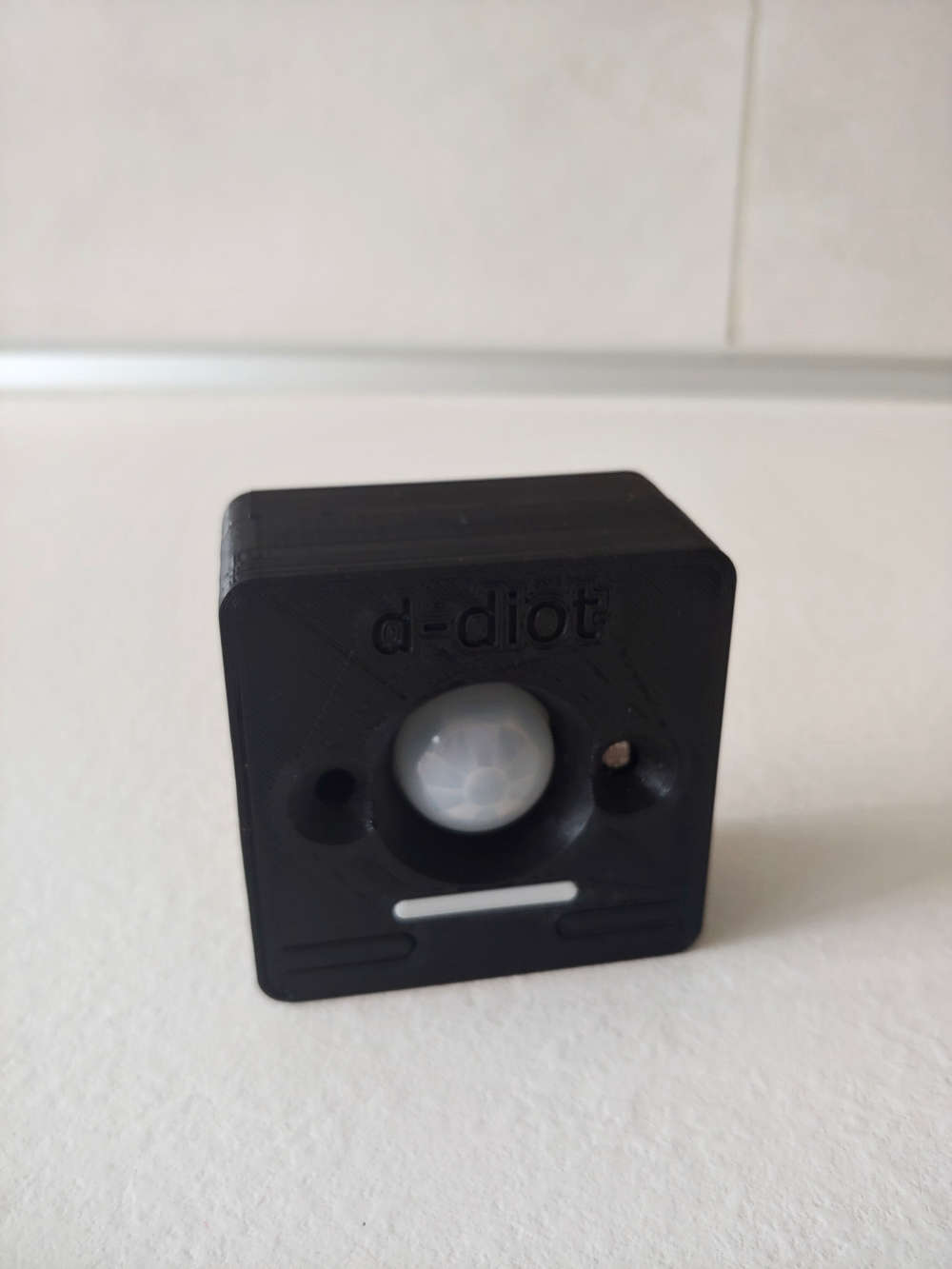
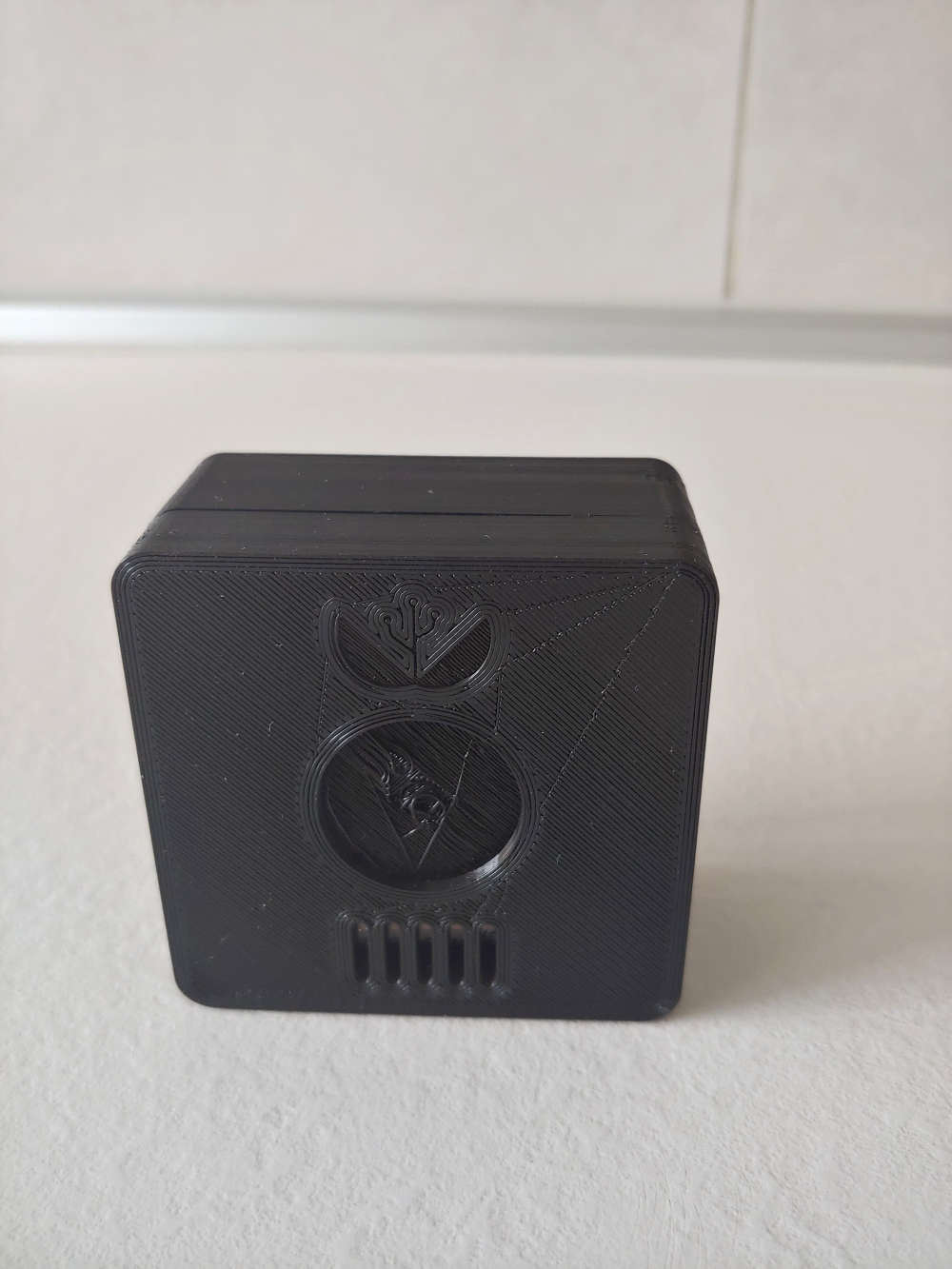
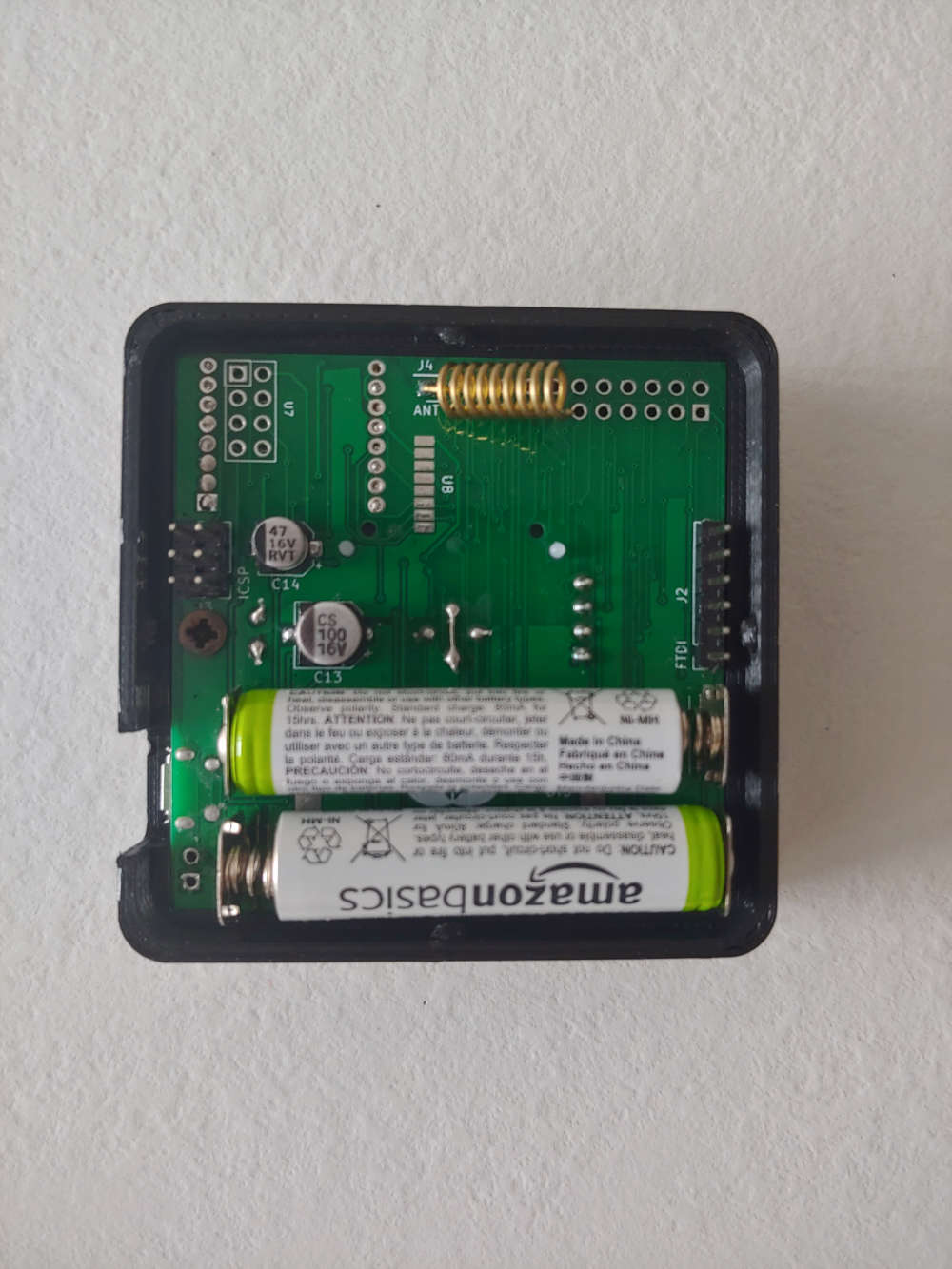
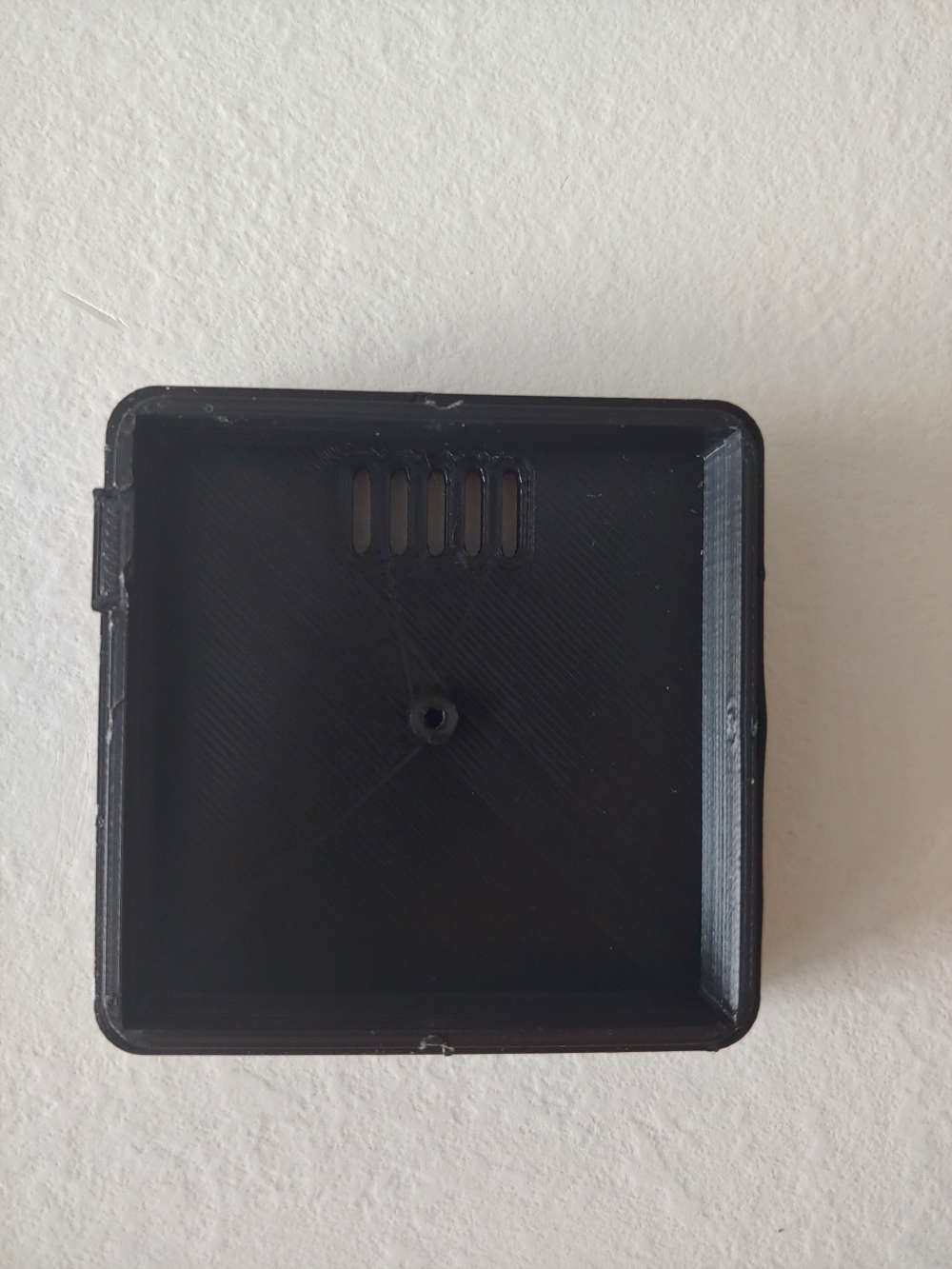
The case for the board V.2.0 will be similar, only the position of the LED will change.
-
If you have room for a AA, an LiFePo4 battery is right in the sweet spot.
I have seen LiFePo4 AAA batteries, but they are really hard to find.@rozpruwacz said in Pir AS 312 with 2 rechargeable AAA battery. Boost needed?:
@franz-unix said in Pir AS 312 with 2 rechargeable AAA battery. Boost needed?:
About the Li-ion battery, it seems to be a general agreement (see this topic for example) about the fact that the best option to power a node is with AA or AAA batteries. In fact one of the advantages is that you don't need to step up or down the voltage to power the radio and the MCU.
There is no one "best option". The power supply heavily depends on the project requirements. The PIR sensor requires noiseless voltage between 2.7 and 3.3v. This makes use of 2xAA problematic. In my opinion for such a project higher voltage supply with low quiescent current ldo is the best option. And it happens that li-ion battery with its voltage range and 3v ldo makes them perfect match. At least this is how I did it in my homE I went even further in my project and there is two ldos, one for pir and one for mcu + rf module as those two components creates large spikes in current flow as they work making supply voltage noisy.
PS. The other benefit of rechargable batteries is that they are rechargable :) so you don't need to remember to buy batteries when you go out of them.
you will handle the pir in your software but generally the pir needs to be powered all the time so no need for shutdown mode in your boost converter. The other thing is that pir doesn't linke noisy power supply, and dc converters are rather noisy especially in low current area. I would recommend t
-
@rozpruwacz said in Pir AS 312 with 2 rechargeable AAA battery. Boost needed?:
@franz-unix said in Pir AS 312 with 2 rechargeable AAA battery. Boost needed?:
About the Li-ion battery, it seems to be a general agreement (see this topic for example) about the fact that the best option to power a node is with AA or AAA batteries. In fact one of the advantages is that you don't need to step up or down the voltage to power the radio and the MCU.
There is no one "best option". The power supply heavily depends on the project requirements. The PIR sensor requires noiseless voltage between 2.7 and 3.3v. This makes use of 2xAA problematic. In my opinion for such a project higher voltage supply with low quiescent current ldo is the best option. And it happens that li-ion battery with its voltage range and 3v ldo makes them perfect match. At least this is how I did it in my homE I went even further in my project and there is two ldos, one for pir and one for mcu + rf module as those two components creates large spikes in current flow as they work making supply voltage noisy.
PS. The other benefit of rechargable batteries is that they are rechargable :) so you don't need to remember to buy batteries when you go out of them.
you will handle the pir in your software but generally the pir needs to be powered all the time so no need for shutdown mode in your boost converter. The other thing is that pir doesn't linke noisy power supply, and dc converters are rather noisy especially in low current area. I would recommend t
@seniora the board supports multiple batteries and multiple radio modules.
When Vcc goes below 2.7V (BoostThreshold in the sketch) the booster is turned on and stay always on, while when Vcc is > 2.7 the booster is turned off and stay off. This is the case of a fully charged CR2032 battery or 2xAAA disposable (Alkaline) batteries.
With 2xAAA rechargeable batteries (NiMH) Vcc is max 2.4V so the booster is turned on by the MCU.The ME2188 works well with RFM69 and 2xAAA rechargeable batteries (Vcc < 2.7V): no false positive in the PIR and good range for the radio transmission. See below that in the night with no motion the pir stay off (clear) even if the booster is active.

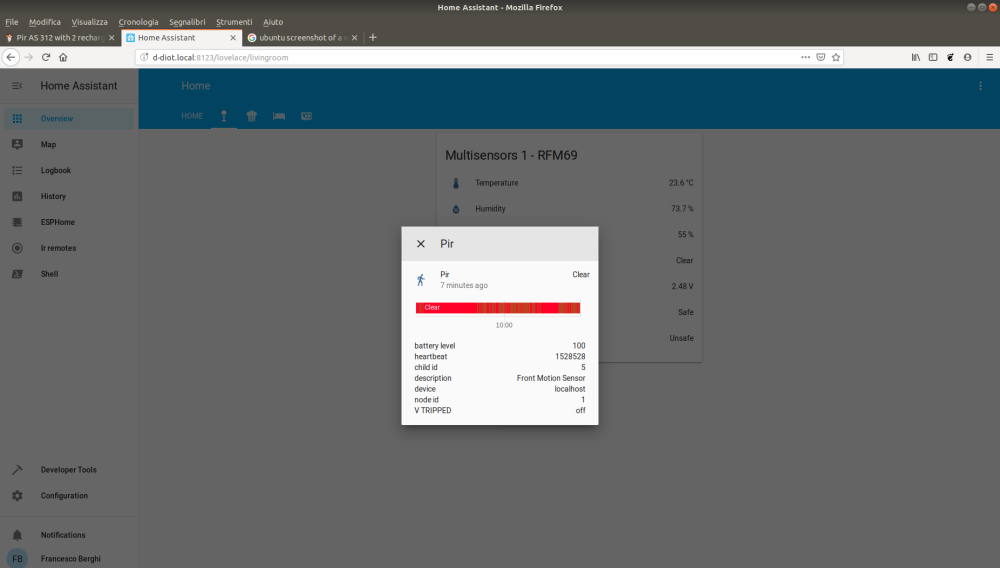
With the NRF24 radio module and a CR2032 battery I have some (not so frequent) false positive in the PIR, but the booster here is always off (VCC > 2.7V), so this may be caused by something else. Searching around, found this.
Probably is the 2.4 Ghz RF signal of the radio module that triggers some false positive in the PIR!
In fact I observe this false positive when the node wakes up by a timer interrupt and start sending data. -
When you sleep the node with a PIR connected, a small 'nap' before the main sleep helps to settle the Vbat, and it usually avoid false triggering. Maybe this will help:
sleep(500); sleep(INTERRUPT,RISING, SLEEP_TIME); -
When you sleep the node with a PIR connected, a small 'nap' before the main sleep helps to settle the Vbat, and it usually avoid false triggering. Maybe this will help:
sleep(500); sleep(INTERRUPT,RISING, SLEEP_TIME);@rvendrame Thanks, I have tried your small "nap" trick and in fact something is happened... but in the opposite direction! The number of false positive is increased :joy:
But probably this is the way to solve the issue. Please note that, in order to stabilize the battery voltage, in the sketch I already have a cr2032_wait() function that sleep the MCU after each radio transmission, if the battery type is set to CR2032.
-
Hi guys, project finished! Now the led are under the Fresnel lens, so the design of the case is more clean (WAF +10 :sunglasses: ).
The final result:

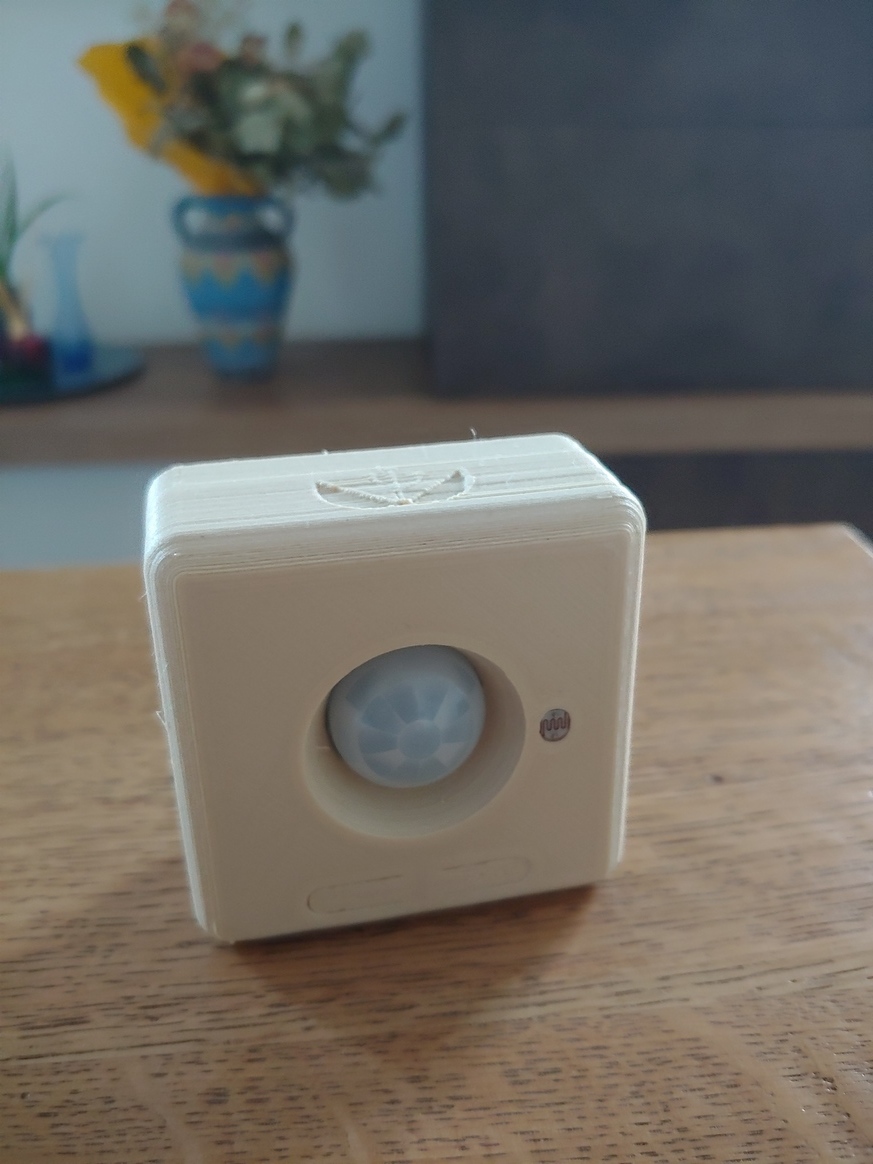

With 2 x AAA batteries and the RFM69 radio module the node works very well and the total cost of the parts is about 10€.
If someone is interested, here a detailed build guide, with the links to all the parts of the project (3d model of the case, Kicad project, gerber files, BOM, firmware).
-
few month ago ,i use tlv61220 step-up boost only for as312 is only 4ua, atmega328p ,battery cr2477 , then get 21ua ,
but now ,i give up boost , i test use ER14335 3.6v CR16340LIPO 【4.2V with diode 0.7V Step-down then 3.5V+- 】 ,same as312 get 18ua,:relaxed: ,ER14335 cost much but 1600mah ! cr16340 750mah rechargeable best choose for me,,,, -
Hi guys, project finished! Now the led are under the Fresnel lens, so the design of the case is more clean (WAF +10 :sunglasses: ).
The final result:



With 2 x AAA batteries and the RFM69 radio module the node works very well and the total cost of the parts is about 10€.
If someone is interested, here a detailed build guide, with the links to all the parts of the project (3d model of the case, Kicad project, gerber files, BOM, firmware).
@franz-unix
This is wonderful work... thanks for inspiring me :-)
I know that this is an old thread,
but can you give me a link of the AAA battery holder please ?I just make a node sensor and I want to use it.
Thanks a lot
Denis -
@franz-unix
This is wonderful work... thanks for inspiring me :-)
I know that this is an old thread,
but can you give me a link of the AAA battery holder please ?I just make a node sensor and I want to use it.
Thanks a lot
Denis@DenisJ : Glad to know that this work has been useful for you in some way. :+1:
Regarding the AAA battery holder, the footprints on the PCB are for a Keystone 5204 (negative) and Keystone 5226 (positive) contacts.
I have purchased them on ebay; unfortunately the item that I have purchased is not more available, but this one appears to me like the same thing.
-
@DenisJ the link is broken, so I have not seen the contacts that you have bought, but if they are just a little bit smaller and they can fit the hole on the pcb, they should be OK.
